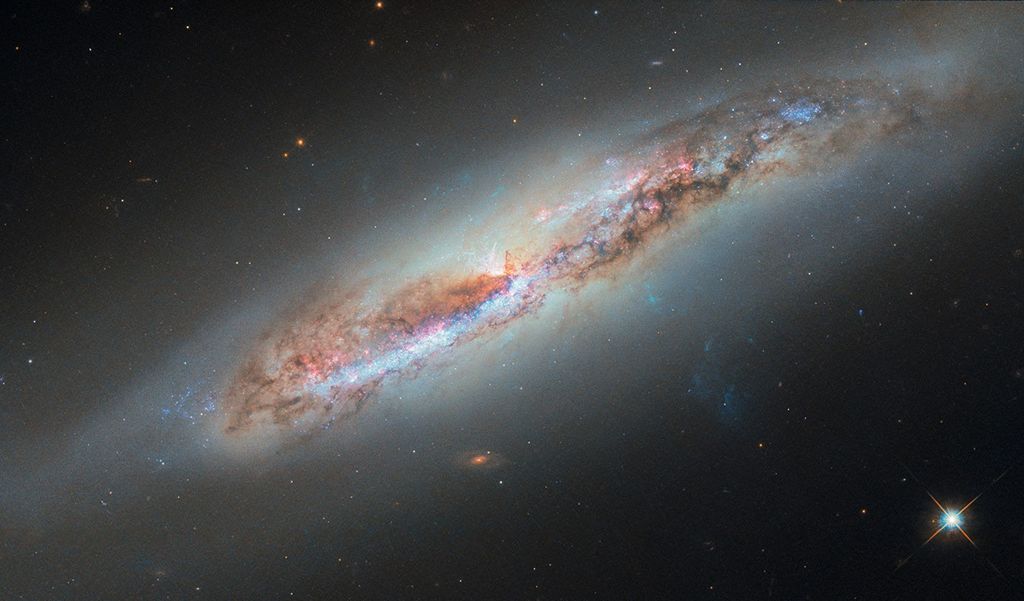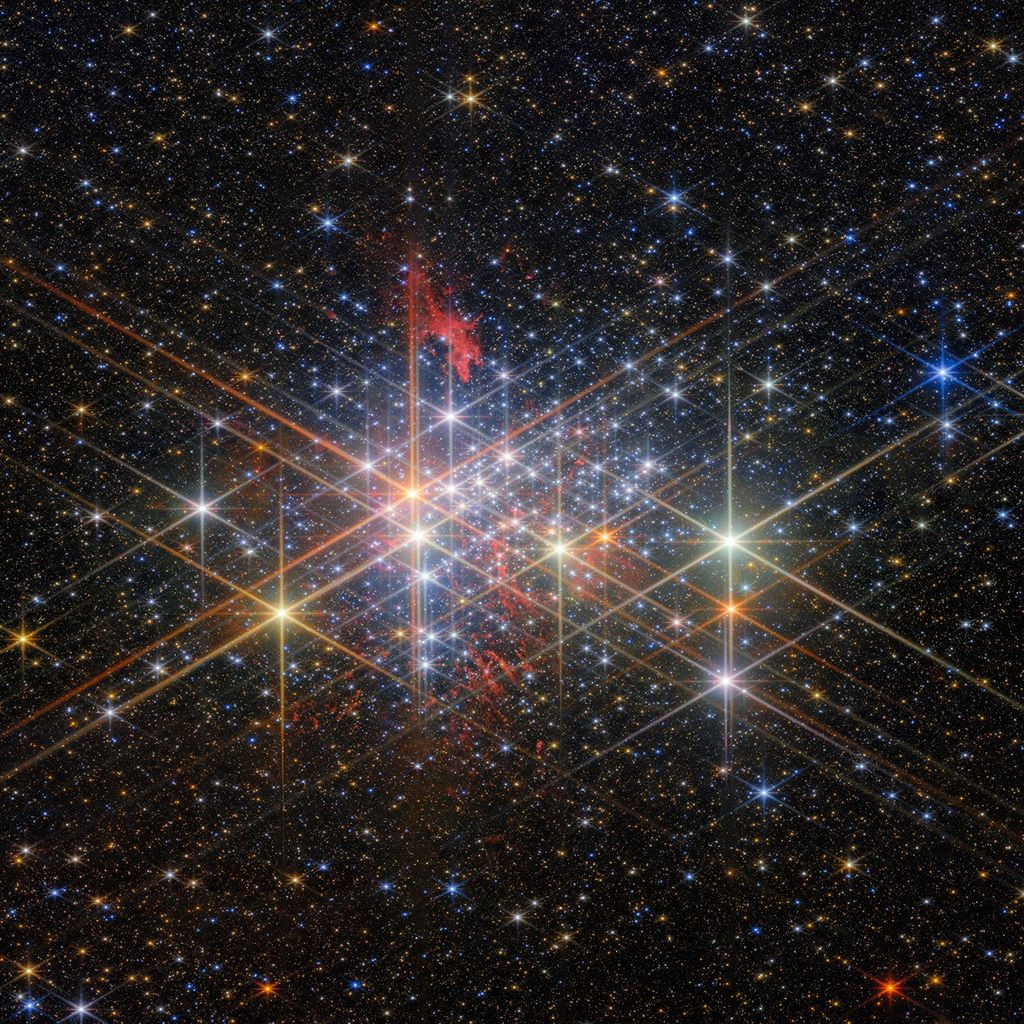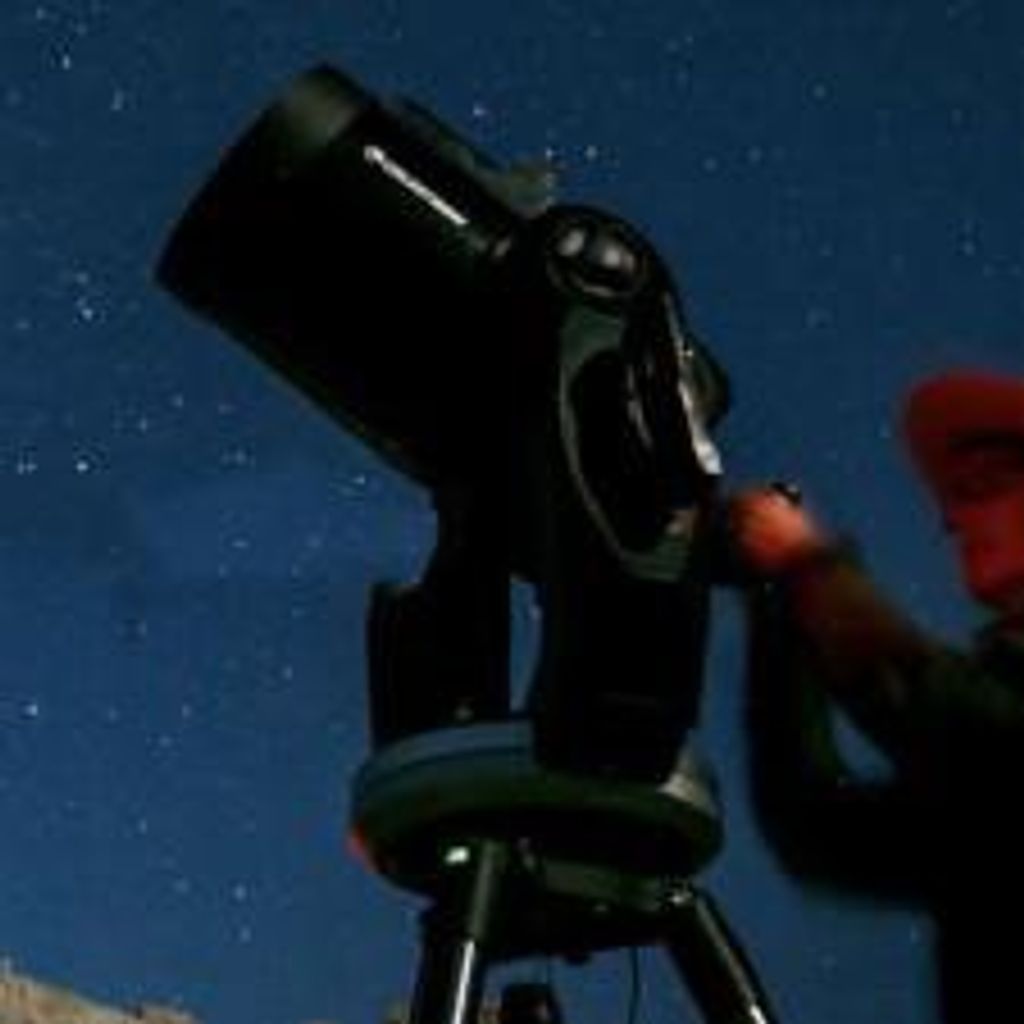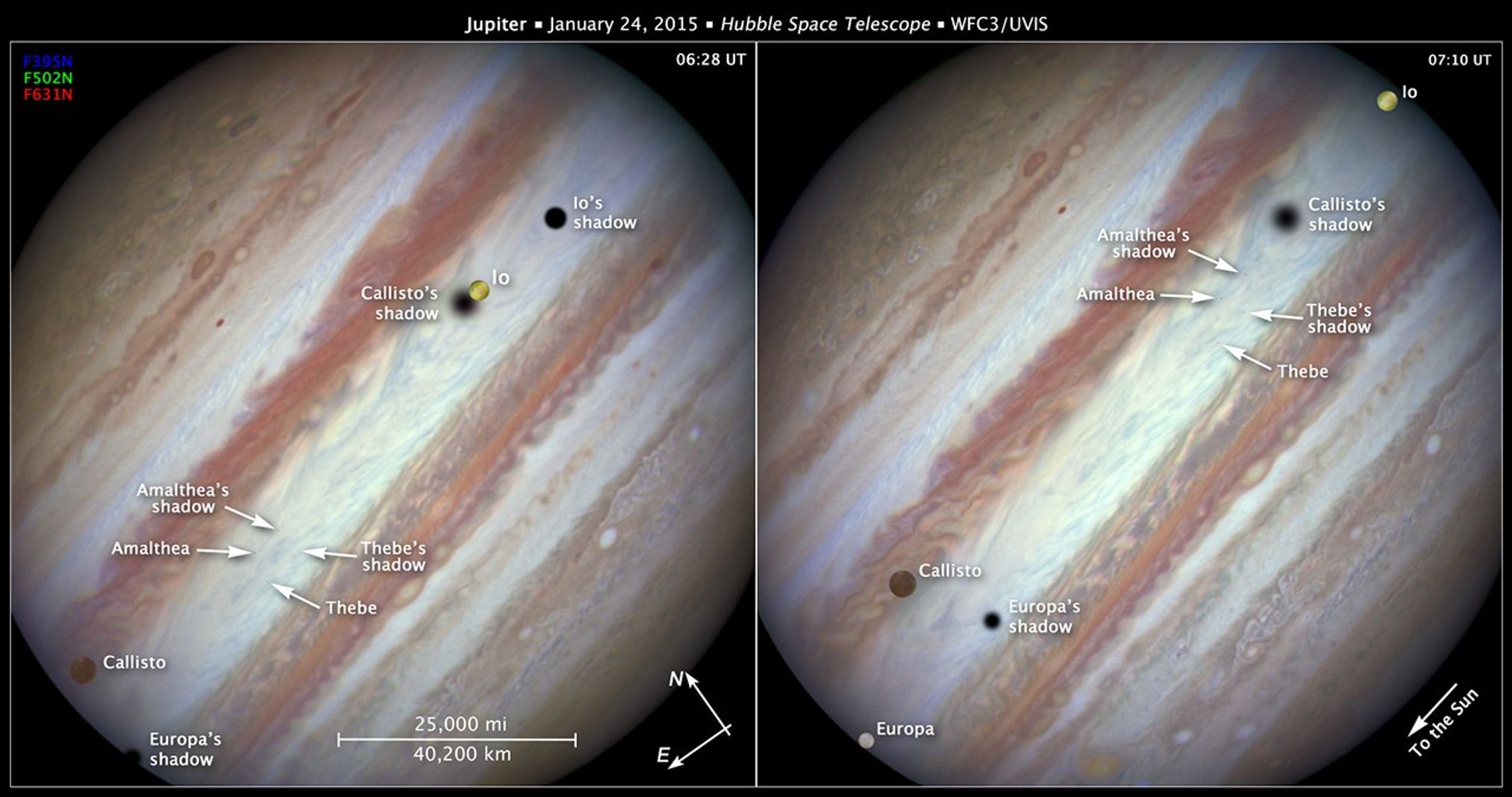1 min read
Geometry of Rare Triple-Moon Conjunction at Jupiter
- Release DateFebruary 5, 2015
- Science ReleaseHubble Captures Rare Triple-Moon Conjunction
- Credit
Related Images & Videos
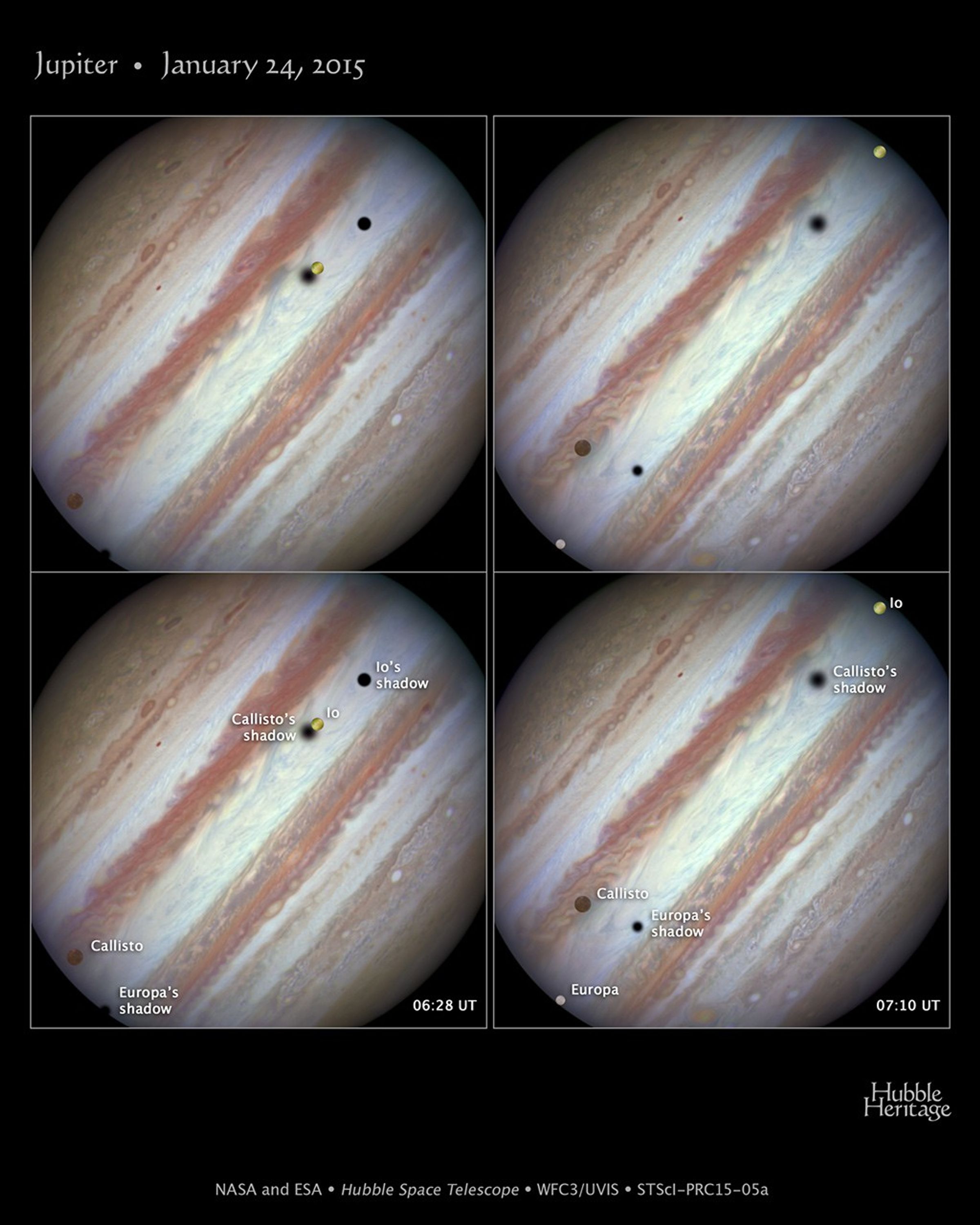
Jupiter — January 24, 2015
Firing off a string of snapshots like a sports photographer at a NASCAR race, NASA's Hubble Space Telescope captured a rare look at three of Jupiter's largest moons parading across the banded face of the gas-giant planet: Europa, Callisto, and Io. These so-called Galilean...

Jupiter Moon Transit, January 24, 2015 (06:28 UT)
Three moons and their shadows parade across Jupiter at the start of the event at 06:28 UT on January 24, 2015. From left to right the moons Callisto and Io are above Jupiter's cloud tops. The shadows from Europa (not seen in the image), Callisto, and Io are strung out from left...

Jupiter Moon Transit, January 24, 2015 (07:10 UT)
Three moons and their shadows parade across Jupiter near the end of the event at 07:10 UT on January 24, 2015. Europa has entered the frame at lower left. Slower-moving Callisto is above and to the right of Europa. Fastest-moving Io is approaching the eastern limb of the planet....

Jupiter Moon Transit, January 24, 2015 (06:28 UT) – Annotated
Three moons and their shadows parade across Jupiter at 06:28 UT on January 24, 2015. From left to right the moons Callisto and Io are above Jupiter's cloud tops. The shadows from Europa (not seen in the image), Callisto, and Io are strung out from left to right.

Jupiter Moon Transit, January 24, 2015 (07:10 UT) – Annotated
Three moons and their shadows parade across Jupiter near the end of the event at 07:10 UT on January 24, 2015. Europa has entered the frame at lower left. Slower-moving Callisto is above and to the right of Europa. Fastest-moving Io is approaching the eastern limb of the planet....
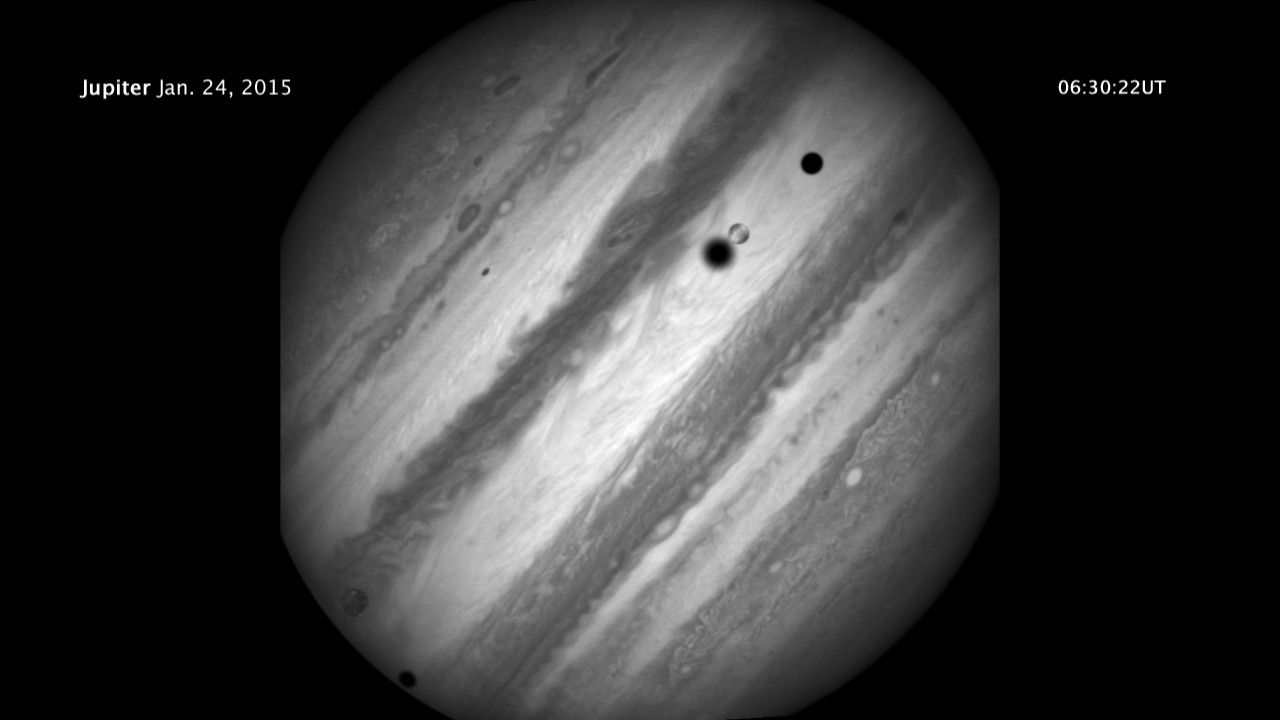
Hubble Captures Rare Triple-Moon Conjunction
This video shows a rare look at three of Jupiter's largest moons parading across the banded face of the gas-giant planet: Europa, Callisto, and Io. They were photographed by NASA's Hubble Space Telescope on January 24, 2015. These large moons can commonly be seen transiting the...
Share
Details
Claire Andreoli
NASA’s Goddard Space Flight Center
Greenbelt, Maryland
claire.andreoli@nasa.gov

